Current Staff
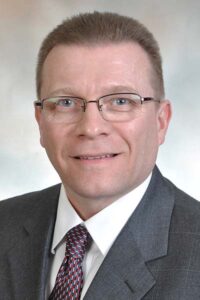
Kim Diefenderfer, DMD, MS, MS is Editor-in-Chief. Dr. Diefenderfer earned his DMD at the University of Pittsburgh and MS degrees in Operative Dentistry and Dental Public Health at the University of Iowa. He retired from the faculty of the Indiana University School of Dentistry in 2023 as a Clinical Associate Professor, Division Director of Operative Dentistry, and one of three faculty in the Graduate Cariology and Operative Dentistry Program. Prior to his time at IU, he served in the US Navy Dental Corps, culminating in an appointment as professor of Research and Clinical Investigations at the Naval Postgraduate Dental School, Bethesda, Maryland. He retired from the US Navy at the rank of Captain (O-6) after 30 years of active duty service. He currently serves as a clinical examiner for the Commission on Dental Competency Assessments and Chairman, Examinations and Certifications for the American Board of Operative Dentistry, as well as an independent consultant in dental research. Prior to his editorship, Dr Diefenderfer served as Associate Editor from 2015 to 2024.
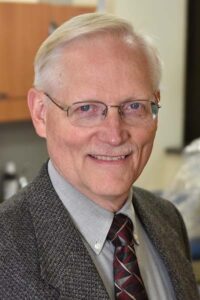
Timothy J Carlson DDS, MSD is managing editor of the journal. Dr. Carlson is Professor Emeritus of Operative Dentistry at the Indiana University School of Dentistry where he had also received his DDS and MSD degrees. His full-time academic career spanned 1980-2018 during which his major responsibility was directing one of the school's Comprehensive Care Clinics in addition to providing Operative Dentistry lectures for third year and Masters level students. As a volunteer, he co-developed and directed the IU Global Service Learning program. Dr. Carlson continues his part-time general dentistry practice in Indianapolis. Dr Carlson has served as managing editor since 1999.

Camila Sabitini DDS MS is Associate Editor. Dr. Sabatini currently serves at Buffalo State College in New York as an Associate Professor of Restorative Dentistry. Dr. Sabatini has served as an Associate Editor since 2017.
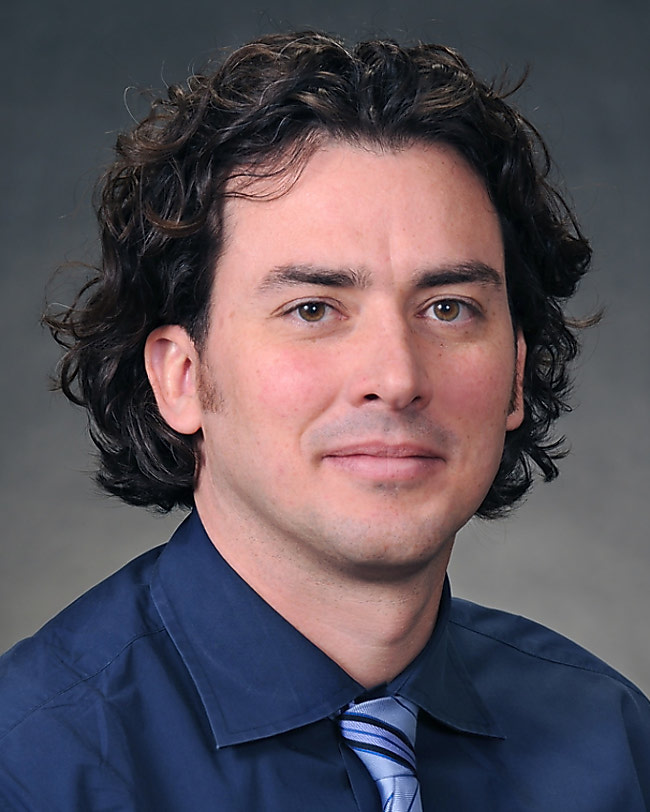
Ricardo "Rick" Walter DDS MS is Associate Editor. After graduating from Dental School in 1999, Dr. Walter practiced in Brazil before joining the Operative (Restorative) Dentistry Graduate program at UNC School of Dentistry in 2002. He received his Master of Science degree in 2005 and joined the faculty at UNC where he stayed until 2011. From 2011-2014, Dr. Walter taught at UPenn School of Dental Medicine. He returned to UNC in 2014. In 2023, he joined HPU Health as Clinical Director of HPU Health Hillandale. Dr. Walter has served as an Associate Editor since 2023.

ü Bert Vasconcellos, DDS, MS, PhD, is Dr. Clifford M. Sturdevant Distinguished Professor and Director of the Graduate and Predoctoral Programs of Operative Dentistry & Biomaterials at the University of North Carolina, Adams School of Dentistry. Dr. Vasconcellos earned his certificate/MS in Prosthodontics and PhD in Operative Dentistry from the University of São Paulo (USP), Brazil, in 1999 and 2001, respectively. He completed his two-year postdoctoral training in Operative Dentistry in 2016 at UNC Adams School of Dentistry and is licensed to practice Dentistry in the State of North Carolina. Before joining the Faculty at UNC in 2018, Dr. Vasconcellos served as a tenured Full Professor of Operative Dentistry at the Fluminense Federal University School of Dentistry, Brazil. Bert has served as an Associate Editor for Operative Dentistry since 2024.

Sabrina Sochacki DDS, MSc, PhD is Associate Editor. Dr. Sochacki is an Assistant Professor at the Department of Restorative Dentistry at the University at Buffalo School of Dental Medicine (UB SDM). She also serves as the Program Director for the MS Program at UB SDM. Dr. Sochacki received her education at Universidade Estadual Paulista Júlio de Mesquita Filho in São Paulo, Brazil. In 2016 Sabrina took a position at the Indiana University School of Dentistry as a research assistant professor and was quickly upgraded to a clinical assistant professor. Dr. Sochacki has served as an associate editor since 2024.
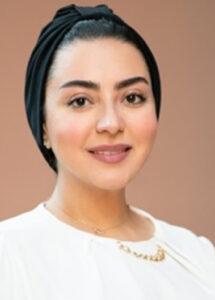
Dr. Sarah Alhalees BDS, MS, ABOD graduated with Bachelor of Dental Surgery degree at King Saud University in 2013. From July 2014 to July 2017, Dr. Alhalees attended the University of Michigan's dental school, where she received a Master of Science degree in Graduate Restorative Dentistry. She then attended the University of Alabama at Birmingham Dental School, receiving a Fellowship in Advanced Esthetic Dentistry and Advanced Restorative Dentistry and Biomaterials. Dr. Alhalees is board-certified by the American Board of Operative Dentistry. She is a restorative dentistry consultant with advanced training in esthetic dentistry at King Faisal Specialist Hospital & Research Centre in Riyadh (KFSH&RC), Saudi Arabia. She’s also the program director of the Saudi Board of Restorative Dentistry (SBRD program) at KFSH&RC and a clinical supervisor for the Saudi Board of Family Dentistry residency program. She is also a member in the exam committee of the Saudi Board of Family Dentistry residency program. Dr. Alhalees has served as an associate editor since 2025.
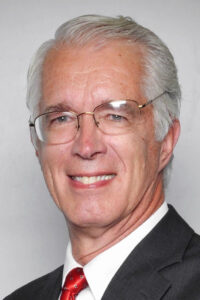
Dr. Bruce A Matis DDS, MS, graduated dental school from Case Western Reserve in 1971. He later earned a Master of Science in Dentistry and a One-Year Certificate in Preventive Dentistry both from the Indiana University School of Dentistry in 1983 and 1984. Dr. Matis served in the US Air Force, receiving a host of recognitions for his efforts in the advancement of the service and of dentistry in the service, retiring as a Colonel in 1993. He then served as a professor, and the Director of the Clinical Research Facility at the IU School of Dentistry where he became world renown in the area of tooth whitening. He retired as professor emeritus in 2013. Dr. Matis then worked at a private dental research lab where he still provides assistance and training for the dental clinical research staff. He has recently been recognized as one of the top 2% of cited dental scientists in the world since 1984 by Elsevier Data Repository. Dr. Matis served as an associate editor for the journal for 15+ years. Currently, Dr. Matis is serving as the assistant managing editor.
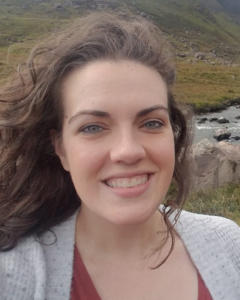
Ms Meredith Lecklider is Office Manager as well as Subscription Manager. She started with Operative Dentistry in 2023. She also works as the Human resources coordinator, Office of Faculty Affairs at Indiana University School of Dentistry.

Kevin Matis MSEd is Editorial Assistant and Director of Continuing Education. Kevin has been working for the journal in various capacities since 2001. Currently, Kevin maintains the Continuing Education recognition and administration for Operative Dentistry and others in joint education ventures. Kevin is the liaison between the journal editorial team and the reviewers, authors, and reviewers. He maintains the technology, the written policies and procedures, and the author guidelines for Operative Dentistry.
Past Editors
We honor the following individuals who have spent untold hours on bringing this journal to life. We thank long-time Managing Editor, J Martin Anderson BA, BS, DDS for the text.
![]() A. Ian Hamilton, BA, BS, MA, PhD, DDS 1974 -1985
A. Ian Hamilton, BA, BS, MA, PhD, DDS 1974 -1985
The new journal was to be a quarterly publication rather than semiannual, and, it would publish articles that advanced the practice of the entire field of operative dentistry. The scope of the journal included conservation and restoration of teeth, the scientific foundation of operative dental therapy; dental materials; dental education; and the social, political, and economic aspects of dental practice. Review papers, book reviews, letters, and classified ads for faculty positions are also published. Volume 1, Number 1 was published in the Winter of 1976. Dr. Hamilton had selected a blue cover scheme with a white border of polka dots and white lettering. The size of the journal was 7 inches by 9.5 inches. The cover was varnished. The annual subscription rate at this time was $20 per year. There were 48 pages per volume, each bound with a saddle stitch.
The organization of the journal infrastructure was a formidable task for the editor. Associate editors, editorial assistants, copy and editors, a managing editor, and editorial board (referees), editorial advisers, a subscription manager all had to be recruited, trained, and supervised. The editor’s job was to select the best possible articles for publication and then get those articles in the best possible shape for the reader.
Dr Hamilton’s publishing team:
Editor: Dr. A. Ian Hamilton
Associate Editors: Wilmer B. Eames, Clifford H. Miller, Gerald D. Stibbs, David J. Bales
Managing Editor: J. Martin Anderson
Editorial Assistant: Nancy M. Neyens
Editorial Associate: Joan B. Manzer
Subscription Manager: Judy A. Valela
![]() David J. Bales, DDS, MSD 1986-1992
David J. Bales, DDS, MSD 1986-1992
Dr. David Jefferson Bales succeeded Dr. Hamilton as editor in 1986. Prior to Dr. Bales’s editorship the mechanics of page layout were done by the cut-and-paste method. This was time-consuming and required much manual labor. Joan Manzer, the copy editor, labored diligently and persistently with copy and the page layout. Dr. Bales’s expertise with computers and the use of word processing software eliminated the old cut-and-paste method and greatly reduced the editing. It became much easier to place copy on the page and size pictures and illustrations. In 1990, with desktop technology, Dr. Bales moved the journal from four to six numbers per year. He also reversed the existing color scheme to a white background with blue lettering and logos. About this time, facsimile and e-mail technology were being made available. This greatly enhanced the ability of the editor to communicate with authors and the editorial board (referees).
Dr. Bales recruited two outstanding employees for the journal: his wife, Darlyne Bales, in 1987 as an editorial assistant, and Kate Flynn-Connolly in 1988 as an editorial associate. Both of these women provided tremendous support, expertise, and enthusiasm for the journal. They continued in their duties until the journal was moved to Indiana. The quality and timeliness of their work greatly enhanced the quality of the journal and made working with the editorial board an easier task for the editor.
During his tenure, Dr. Bales produced seven volumes, 34 numbers, and two supplements, one of which was the prestigious “Proceedings of the International Symposium on Adhesives in Dentistry,” which contained twenty-two state-of-the-science papers. David’s exceptional work ethic, depth of knowledge, and dedication to his profession provided all the necessary ingredients for a successful editorship. He will always be our benefactor.
![]() Maxwell H. Anderson, DDS, MEd, MS 1993 – 1995
Maxwell H. Anderson, DDS, MEd, MS 1993 – 1995
Dr. Maxwell H. Anderson became the third editor of Operative Dentistry, succeeding Dr Bales 1993.
His experience as a teacher, mentor, researcher, speaker and writer, gave him the tools for editing what had by now become a recognized and respected scientific journal. Though his tenure as editor was relatively short, he guided the publishing of twelve numbers and made significant changes to the size and format of the journal. His changing the size to 8 ½ x 11 inches gave the publication a new look and also saved money in printing costs. It also afforded the journal the luxury of publishing more articles. Dr. Anderson was keen to recognize the need to carry clinical articles. He wrote specific guidelines for prospective authors of these papers (Vol 18(3) pg 115). A “clinical relevance” statement was required for all original papers to give the reader a better understanding of the practical application and usefulness of the article published. Max’s energy and exceptional knowledge of the field of operative dentistry greatly benefited the readers of Operative Dentistry. He will always be our benefactor.
![]() Richard B. McCoy, DDS, MS 1995 – 1999
Richard B. McCoy, DDS, MS 1995 – 1999
Dr. Richard B. McCoy succeeded Dr. Maxwell H. Anderson as editor of Operative Dentistry in 1995 when Dr. Anderson left the university to pursue a career in the dental insurance industry. Dr. McCoy has been on the editorial board, and, had been associate editor, which placed him in an excellent position to take over as the new editor. Dick was very well acquainted with the editorial team and had extensive experience working with scientific typescripts. Dr McCoy produced 30 numbers and the first color article was published during his tenure. He strengthened the editorial board (referees) and set a policy that utilized three referees for each submitted typescript. Dr. McCoy expanded the journal from 48 pages to 72 pages with a new “spine” binding that displays the journal’s name and volume for easier shelf-identification. Dick’s editorship is marked by the international recognition of Operative Dentistry for its overall quality. This has resulted in a continuing influx of excellent typescripts from around the world that provide our readers with valuable information. Dr. McCoy resigned as editor in 1999 and continues as an associate editor. He will always be our benefactor.
 Michael A Cochran, DDS MSD 2000-2009
Michael A Cochran, DDS MSD 2000-2009
Dr. Cochran’s first task was moving the journal offices from Seattle to Indianapolis. Through a collective effort from both universities, those tasks were accomplished with no disruptions in publishing. Dr. Cochran efficiently managed to form a new publishing team at the Indiana University School of Dentistry and the move was accomplished expeditiously.
Mike was a leader in operative dentistry and dental education throughout his career and retired as chair of the graduate program in operative dentistry at Indiana University. The journal was very fortunate to have him on board as editor. He efficiently processed a very large number of typescripts, and increased the number of pages printed to 100-130 in each issue. Mike gave a new look to the journal with a new cover design and internal style changes. He added an “Invited Papers” section that allows the journal to provide more clinical and state-of-the-art technique articles. Another major change in the journal format is the inclusion of corporate sponsorship. The corporate logo of each sponsor is published in each number. These companies have been selected by a commitment to operative dentistry equal to our own. This program has increased revenue which has helped keep the subscription rate nominal yet allows for improvements in quality, size and color. Arguably the most significant change to the journal occurred under Mike’s watch when the journal began online publications in 2006. With this advancement, subscriptions included an electronic journal and libraries in particular benefitted from this opportunity to have the journal available for a much wider student and research audience
Dr. Cochran’s editorial team:
Editor: Michael A. Cochran
Editorial Assistant/Subscription Manager: Joan Matis
Editorial Associate: Karen E Wilczewski
Associate Editors: Bruce A Matis, Edward J DeSchepper and Richard B McCoy
Managing Editor: Timothy J Carlson
Assistant Managing Editors: Joel M Wagoner and Ronald K Harris
 Jeffrey A Platt, DDS MS 2010-2024
Jeffrey A Platt, DDS MS 2010-2024
Dr. Platt oversaw the transition of an institutionally based and supported journal to one that operated completely in the virtual world. This was accomplished at a time where there was greater competition in acquiring quality manuscripts as well as the challenge of a worldwide pandemic which saw the rapid shrinking of available supplies, research, and working publishing professionals.
Jeff is a recognized world leader in dental materials. He continued to serve as the Chair of Biomedical and Applies Sciences, Director of both Dental Biomaterials and Biomedical Sciences Research at the Indiana University School of Dentistry after stepping down as Editor of the Journal. The Journal was extremely fortunate to have Jeff’s services as editor. During his Operative Dentistry tenure, he also acted as editor-in-chief of the Journal of the American Dental Association as they searched for a permanent person to fill that role. Jeff commented often at the ability of OpDent to put out a journal of such quality with the tiniest fraction of the resources he had at his disposal at JADA; such comments were (albeit unintentional) a sincere complement to his knowledge and leadership of OpDent.
Jeff oversaw the cover redesign of the journal from logo based to a cover photo format, which both opened opportunities for subscribing dentists with hobbies in photography to see their excellent work published, as well as making the journal more visually appealing. He continued the previous editor’s internal style and pushed to have more clinical articles submitted. Jeff also negotiated the minefield of the COVID pandemic while simultaneously redeploying journal resources to make the journal more financially viable in the modern publishing landscape. These pressures and unavoidable obstacles resulted in a season of significant publishing delays. Jeff persevered and ended his tenure with on time publications, a streamlined publishing process, a viable budget, and recognition of his many achievements by the Academy of Operative Dentistry as recipient of the 2024 Hollenback Memorial Prize.
Dr. Platt’s editorial team (volumes of service):
Editor: Jeffrey A Platt (35-49)
Editorial Assistant/Subscription Manager: Joan Matis (35-36)
Editorial Associate: Karen E Wilczewski (35-36)
Office Manager(s): Joan Matis (37-40), Erin Cody (41-49), and Meredith Lecklider (49)
Proof Editor/ Web Developer: Jeremy I Matis (35-37)
Administrative Assistant: Kevin B Matis (35-36)
Editorial Assistant/ Director, Continuing Education: Kevin B Matis (37-49)
Associate Editors: Bruce A Matis (35-40), Michael A Cochran (35-37), N Blaine Cook (37-49), William D Browning (39-40), Kim E Diefenderfer, (41-49), So Ron Kwon ( 41-49), Camila Sabatini (43-49), and Ricardo Walter (49)
Managing Editor: Timothy J Carlson (35-49)
Assistant Managing Editors: Joel M Wagoner (35-39), Robert C Keene (35-36), Bert A Smulders (35-36), Barry O Evans (37-49), Lawrence Vanzella (37-49), and Paul Hasagawa (40-49)
Statistical Consultant: George J Eckert (41-49)